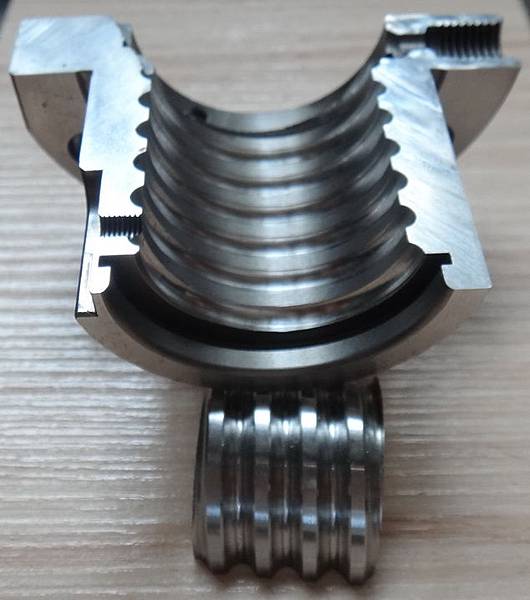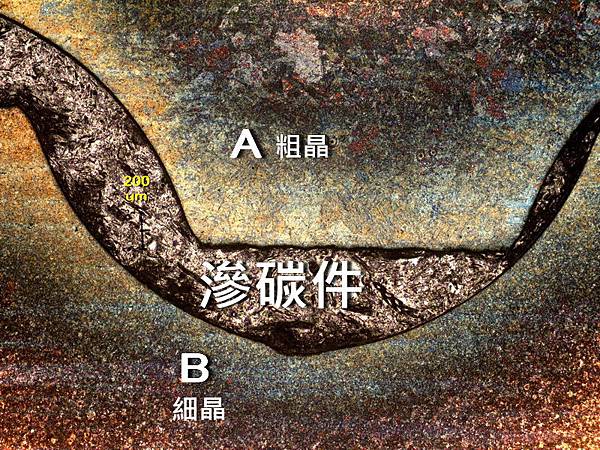台灣 Ball screw 的產品. 新機使用時, 老覺得螺桿機油很快黑. 所以著手分析一下其熱處理金相.
Ball Nut 滲碳層R.A.太多了些, 導致掉屑, 6個月游隙就很大了. 同一廠商產品, 4年前裝的一批卻還沒背隙. 此批的製程/品管管制實在有問題! 這品質要在國際市場立足, 仍有很大的距離, 請繼續加油, 為台灣工業水平的提昇加把勁!


比較上圖A與B兩螺母晶粒大小的差異. 出問題的是粗晶的A件. 你看得岀它的晶粒大小嗎? 粗晶導致RA多, 為何A會粗晶, 而B不會, 請追蹤內部熱處理生產記錄.



粗大的沃斯田鐵淬後很容易殘留沃斯田鐵(照片中光點). 殘留沃斯田鐵在滾珠的蹂躪下會變態成新的(未回火) 麻田散鉄fresh Martensite, 未回火麻田散鉄性極脆, 在滾珠不斷碾壓(蹂躪)下, 很快就成粉屑剝落. 精密零件有此數量的殘留沃斯田鐵, 都會夭壽, 不要質疑吳老師的經驗之談
下面這篇文章提到: 金相分析看到的結果, 遠低於X線繞射法所測.
http://www.georgevandervoort.com/metallography/gen...
節錄描述兩者差異的一段: 差距有多大 請自行閱讀. 這昰極具權威的世界級的金相大師的文章,
Figure 8 shows the microstructure of the cone bearing that was reported to contain 25.4% retained austenite etched with 4% nital plus 1% zephiran chloride. The image, by eye, does not appear to be one-fourth retained austenite, and image analysis measured only 13.3% with this etch (and less with other etchants). The specimen with 19.7% retained austenite was measured as 8.5% by image analysis with this etch, and the specimen with 16.2% retained austenite was measured as only 1.2% retained austenite by image analysis with this etch. In general, this is the type of difference that the writer has always seen when doing such experiments previously.



 留言列表
留言列表

